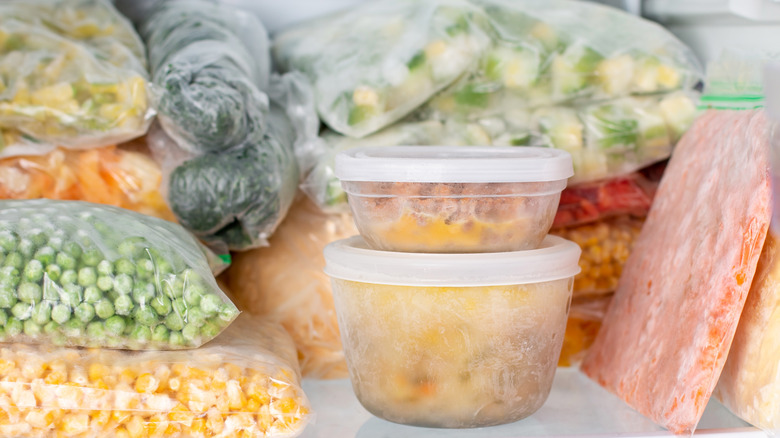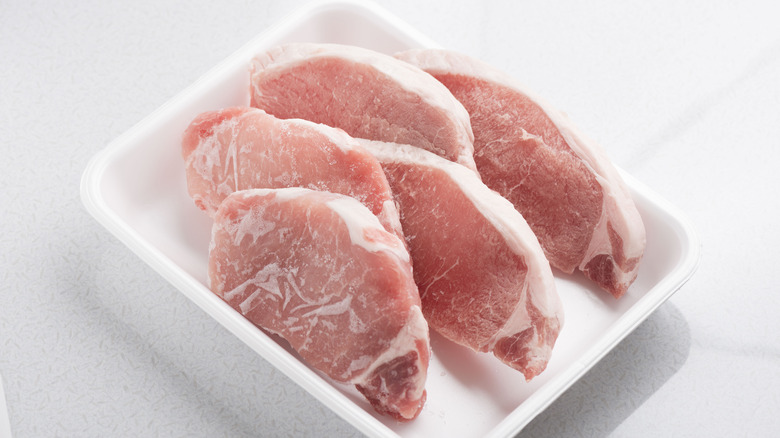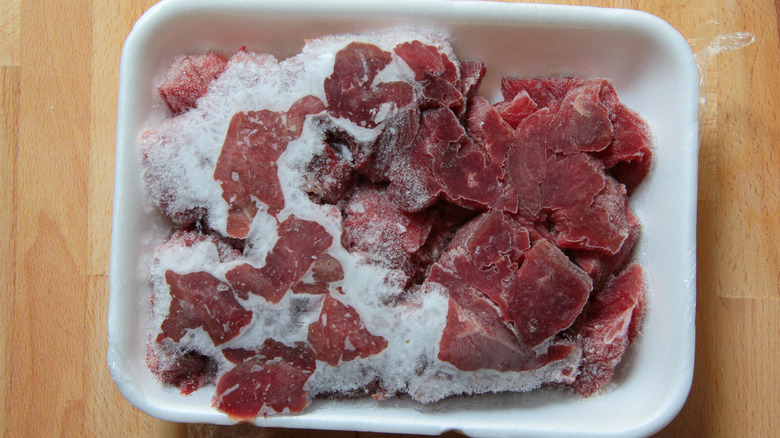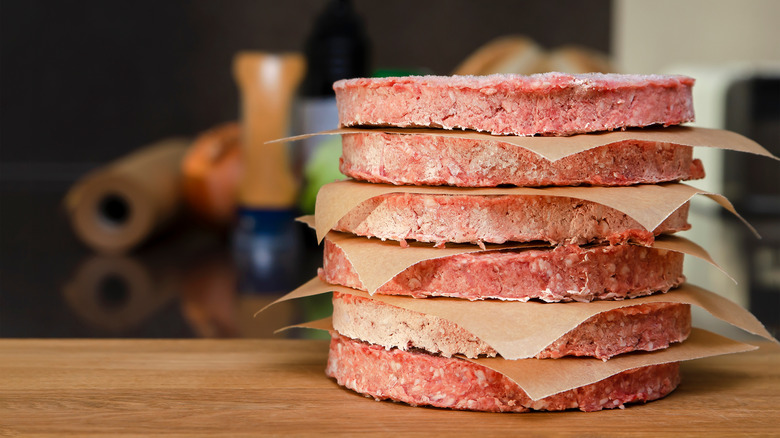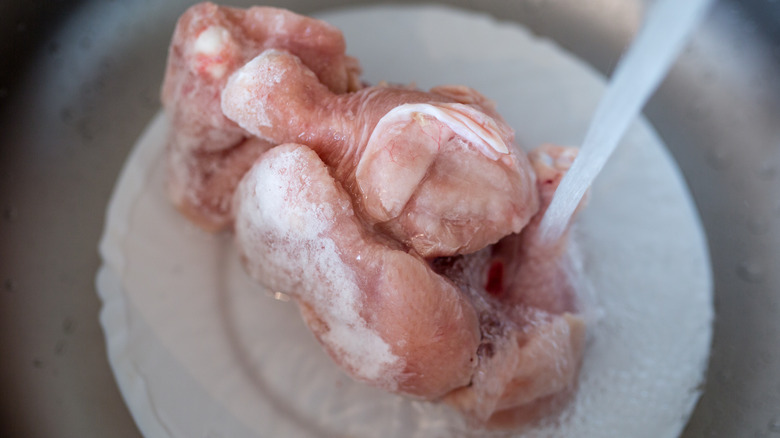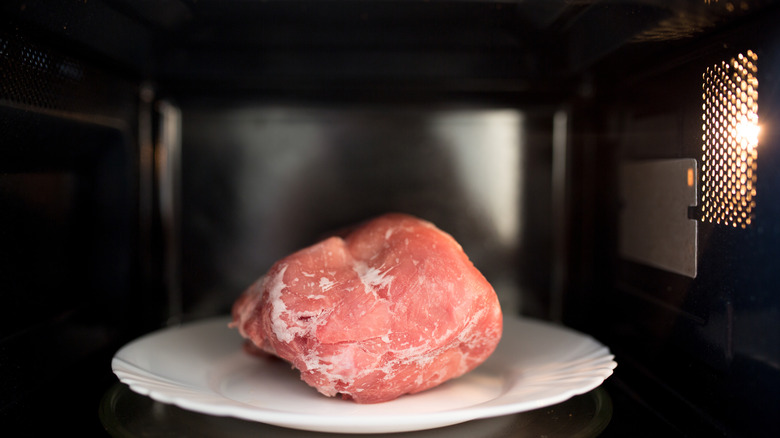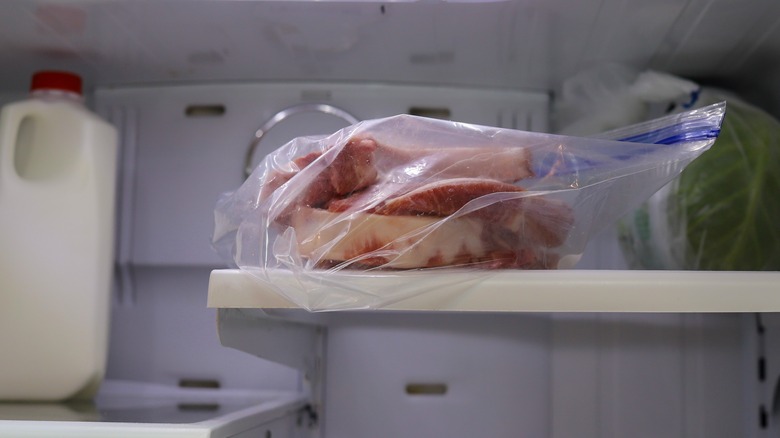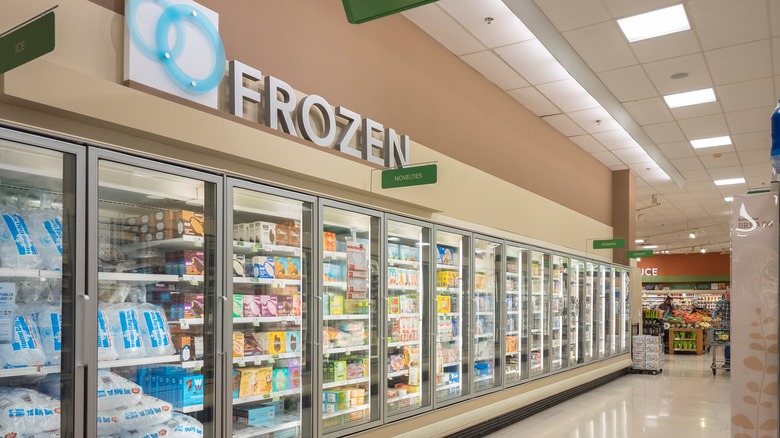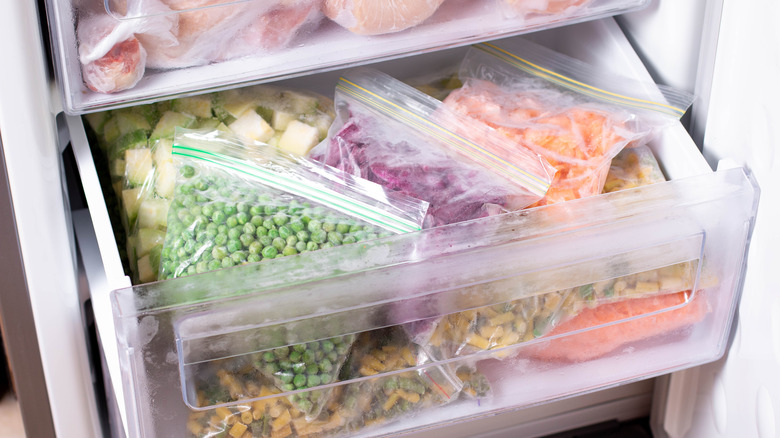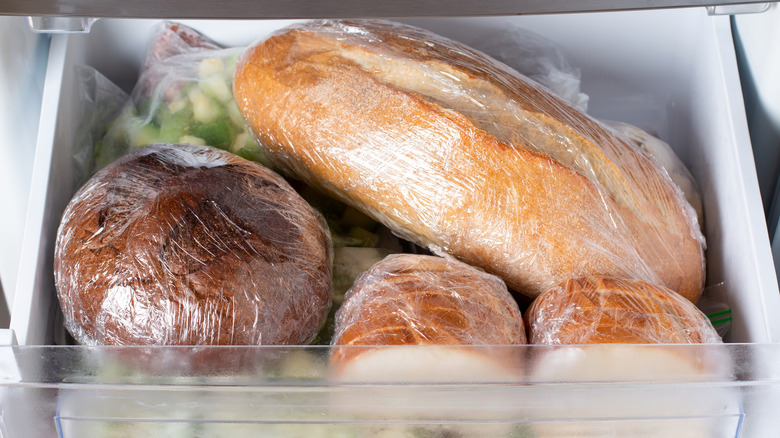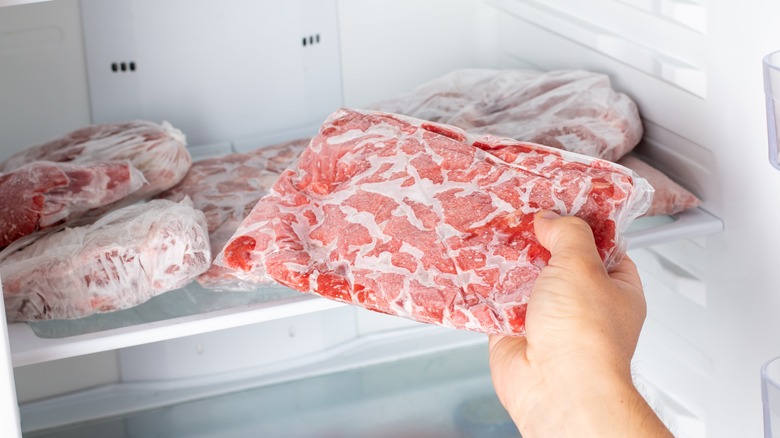10 Defrosting Myths You Must Stop Believing
There are many myths we've learned over time: Old wives' tales or ideas that have been passed on to us as children. Many are helpful and keep us from making unnecessary mistakes in our lives. But others are less helpful and sometimes untrue. They can lead us to believe inaccurate information for years to come.
Freezing is one of those areas that tends to attract a lot of misconceptions. Maybe you grew up in a family that froze everything they had as leftovers and ate it for months afterward. Or perhaps you were at the other end of the spectrum, and your parents never froze and reheated their food because they were convinced it just wouldn't be the same a second time around.
For the record, both are myths. Food won't last forever in your freezer, but freezing it to eat a second or even third time doesn't do irrevocable harm in most cases. Some foods can't be frozen, and others don't do as well under extreme cold: Vegetables with high water content leap to mind.
In most cases, however, freezing is a quick and economical way to get food on the table. It is very important to know what's true and what isn't with your freezer in order to use it most effectively so that you can figure out which beliefs you should hang onto and which ones you can ditch.
1. You can't refreeze thawed meat
There's still some debate about this first one, but because it's so common, it's an excellent place to start. You've likely been told for years that once you thaw your frozen meat or other foods, they cannot go back in the freezer until after you've cooked them.
Many people agree this is a myth, but it is still some solid advice. Your food will taste better if you don't refreeze it multiple times. And you also need to consider aspects like thawing temperature and degradation over time.
According to Farm Meets Fork, if you thaw your food in the refrigerator, it is, in most cases, entirely safe to refreeze. Thawing in the fridge allows your food to come to room temperature slowly and safely. Since it wasn't exposed to bacteria, it is safe to refreeze if other dinner plans arise.
If you left your meat on the counter to thaw or used cold water or the microwave, your best bet is to cook the meat as planned. Vegetables and packaged frozen goods are a bit more stable than meats, so they will stand up to bacteria better, especially if they are unopened. If you thaw your food in the fridge, check the consistency, especially with meats. If they smell and look fine, they are safe to refreeze.
2. It's safe to defrost your food on the counter
Now that we've brought up the elephant in the room let us address it: Thawing food on the counter is a pretty common mistake. People decide to do this because it's faster than thawing in the fridge, but it's also more dangerous because it makes your food susceptible to bacteria. Do not thaw your food on the counter, no matter how tempted you are.
The USDA refers to the process of food coming from a fully frozen state to a thawed one as "the big thaw." The USDA points out that serious dangers lurk whenever your perishable foods undergo this process. If you are going to thaw these foods on the counter, ensure you don't leave them there for more than two hours. Any longer, and you expose the meat, yourself, and your loved ones to foodborne illnesses.
This happens because foods don't thaw uniformly. Outer edges of meats and other items tend to defrost faster than the denser centers. This may lead to the thinner sections of your foods reaching what experts consider the danger zone (between 40 and 140 degrees Fahrenheit), at which point your food can turn from perfectly safe to potentially toxic. At these temperatures, bacteria are present and multiply rapidly and can spoil your dinner plans and the rest of your evening. Fortunately, there are alternatives.
3. You must defrost food before cooking it
Debunking this myth is a huge time-saver and may keep your meats fresher. There are plenty of foods you don't need to thaw before cooking. This means you don't need to take your food out and leave it on the counter where it can be exposed to bacteria.
Besides saving you time, this is a healthier option than leaving your meats out to thaw, and if you forgot to take something out of the freezer to thaw in the fridge before you headed to work this morning, this could be the thing that saves your meal.
Somerset Live set out to repair some of the misconceptions the British have, and one of the biggest is that food can't be cooked in its frozen state. And this myth isn't held only by those in the UK but worldwide.
Chicken breasts, hamburger patties, fish, fruit and vegetables, and frozen meals can all be cooked without thawing. Your best bet is to consult the packaging, but if it doesn't specify, remember that most frozen foods can be cooked in that frozen state, though they will take longer to prepare.
If you're worried about mixing and matching your frozen meats and vegetables, don't be. Just think about all those prepackaged skillet meals that are designed to be cooked from frozen. If you're concerned that they won't cook in the same time span, cut your meats before putting them in the freezer when you bring them home.
4. It's safe to defrost in warm water
This is another common mistake that people make when it comes to defrosting. People often use this tactic because they think it is safer and more effective than letting their meat sit out on the counter where bacteria can breed. But the same thing can happen in warm water.
So many of these myths developed because they were time savers. If you forgot to take something out of the freezer, you are likely looking for a quick way to thaw your food. But avoid using warm water, as it can expose your foods to bacteria that grow in the danger zone between 40 and 140 degrees Fahrenheit.
It's understandable why people would think this is a better option. It's faster than thawing on the counter, which means less risk. And it isn't likely to defrost unevenly or to cook in some parts while others remain frozen like it might if you tried thawing on the counter. Unfortunately, you run similar risks with this defrosting tactic. Submerging frozen food in warm water increases the temperature and brings the food to levels at which bacteria can develop and spread rapidly.
5. Microwaving is a safe way to defrost meat
Microwaves have a defrost feature, which makes them safe for thawing, right? Unfortunately, the answer is no. At the very least, they're not ideal because some of your food may get cooked during the thawing process. And there are other risks to thawing your food this way as well.
Michigan State University recommends a few critical steps if you defrost your meat in the microwave. The first is to remove the original packaging, especially things like Styrofoam and plastic wrap from meats. These are not heat-resistant materials, and they can negatively affect the heating process. Glass is your best option as it distributes heat evenly.
It's also best to use a microwave that automatically rotates your food, which will defrost it most evenly. If you don't have one, rotate the food yourself. But keep in mind there are still dangers to this method. Even if you use the defrost option, which heats with 30 percent less power, you risk raising the temperature of your food into the danger zone, which can lead to foodborne illnesses.
Once you have begun any thawing method, you must cook it. Unless your food was thawed in the fridge, it is not safe to refreeze it. So if you've defrosted your food in the microwave, you must continue cooking it. You can use the microwave, the stove, or the oven, but it's important to complete the process.
6. You don't need to monitor food thawing in the fridge
While the fridge is the safest, most effective way to thaw your foods, you can't just leave them in the refrigerator and forget about them. Rotate your frozen foods so that they thaw evenly. According to Food Docs, this is more important when you're using the microwave to thaw, but you still need to rotate your food if you're thawing it in the fridge. You want all surfaces of your food to defrost evenly.
The surface that is face down on the plate is less exposed, and if you don't rotate your food to allow the heat to reach all surfaces, the melted ice from the thawing process can gather at the bottom, causing your food to become soggy.
Your best bet is to start the thawing process in the original packaging, then rotate your food onto an alternative surface to continue thawing. Consider turning your meat onto a glass dish so that the heat reaches the bottom of your food and helps it to reach the same temperature as the top.
Breaking your meat into smaller pieces also helps. If you can, prepare ahead by breaking meat into smaller portions before you freeze it. If you can't, begin to break it down as it thaws to help expedite the thawing process as it takes place. If you leave your meat whole, it could take up to twenty-four hours to thaw completely and effectively in the refrigerator.
7. Food defrosting in your grocery cart is nothing to worry about
Perishable foods are placed at the front of the store, which can make them appealing to shop first. But they're actually there because you should shop for these items last. Food begins to degrade as it thaws, so the longer it sits in your cart at the store, the more it will be exposed to germs.
According to Better Health Channel, you should keep hot items, like whole prepared chickens, away from your frozen foods so they aren't exposed to heat that can begin the thawing process. Doing so brings your food temperature up to the danger zone while you're waiting in line to check out.
If the grocery store is far away, or you expect groups at the grocery store, plan accordingly. Using insulated cold bags or ice packs to transport your cold or frozen foods can help keep them at safe temperatures so they make it home without ending up in the danger zone.
If you don't have a way to maintain the temperature of your foods while at the grocery store, you also risk thawing your foods and then refreezing them later. As we've already discussed, this isn't a safe option unless you are thawing in the refrigerator. Even unintentionally thawing in your grocery cart is equivalent to thawing foods on your counter.
8. Frozen foods should be thrown out after a power outage
It can be tempting to use a power outage as an excuse to eat up that pint of ice cream in the freezer, but most of your items won't thaw during a short power outage. You don't need to throw away meats and other frozen items if you lose power for 24-48 hours or less.
The FDA recommends monitoring the temperature of your fridge and freezer in the wake of a power outage. Your refrigerator should maintain a temperature of around 40 degrees Fahrenheit, and your freezer should be at about 0 degrees Fahrenheit.
One way to ensure you maintain your temperature in the fridge and freezer is to freeze water containers beforehand. You can leave some of these in the freezer once the power goes out and move others into the fridge to maintain the appropriate temperatures. This also provides safe drinking water in case you also lose access to water during a power outage.
You should also keep your fridge and freezer doors closed after losing power to maintain appropriate temperatures. An unopened refrigerator will keep items cold for four hours, but a freezer will keep things cold for 24 hours if it's half full or 48 hours if it's completely full. Check the temperature of your fridge and freezer once power is restored to ensure your food doesn't end up thawing to a temperature that could cause illness.
9. All foods can be defrosted the same way
There are many standard rules when it comes to defrosting. Meats have a standard, as do breads, fruits, and vegetables. But these requirements are not all the same. Bread, for example, can be thawed in the fridge. However, bread can also be thawed on the counter. In fact, the best way to freeze and defrost these items depends on the form that your bread is in.
You can heat bread briefly in the microwave if you're thawing individual slices. On the other hand, a whole, unsliced loaf is best thawed by heating it in the oven. Unlike meats, you can leave bread on the counter to thaw, but it will likely become stale after defrosting.
Packaging slices of bread in small, individual-sized servings, like meats, can help with thawing. A single hamburger bun, wrapped in foil and packaged in a freezer storage bag, will thaw on the counter in roughly fifteen minutes. Thawing could take over an hour if you're defrosting an entire bag of buns.
While most frozen meats should be thawed in the refrigerator, frozen fruits can be thawed at room temperature, but you should be prepared for the texture to change notably. The quality of the fruit will defrost into a soft and watery texture, so it is best to use already frozen fruit while still frozen. When it comes to thawing vegetables, either place them in the refrigerator overnight or run them under cold water for quicker thawing.
10. It doesn't matter where in the fridge you defrost your food
While the refrigerator is the best place to do your defrosting, where you put items in the freezer matters. According to the Minnesota Department of Health, you should avoid meat drawers because they are often only a few degrees warmer than your freezer. And you shouldn't put them on top shelves, where they could drip juices onto other items and cause cross-contamination.
Cross-contamination can take place in your grocery cart, but it can just as quickly happen in your refrigerator. Put any foods you've moved to the fridge to thaw on the lowest shelf where it can't drip on items below. Even better, set the items on a plate lined with a paper towel. This ensures that the juices released during the thawing process don't drip on other things and cause harm.
One of the easiest ways to do this is to enclose your store-bought meats in bags when you pick them up at the grocery store. Then keep the items separate in both your grocery cart and in your refrigerator or freezer, at least until frozen.
When you're ready to thaw your items, aim for the lowest shelves in your refrigerator. Not only are these the coldest sections of your fridge, but they are also the least likely to leave other items in your fridge exposed to juices. It is best to place items on the lower shelves of the freezer to avoid any type of cross-contamination.
